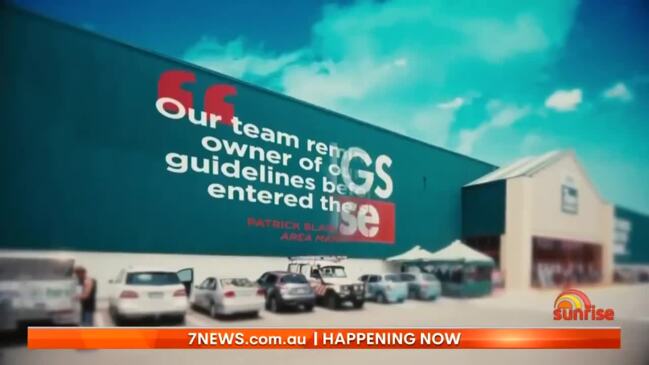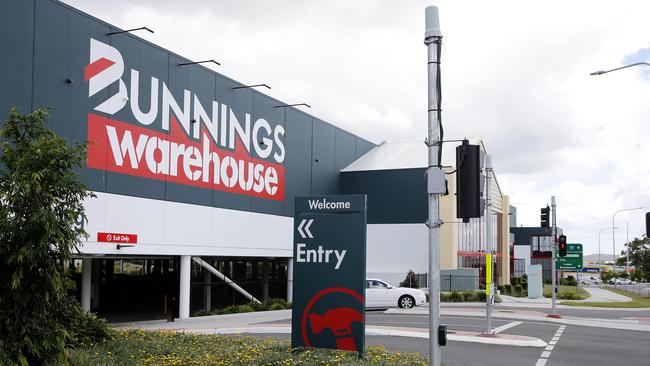Reason Bunnings would cut jobs after huge $2 billion profit
Bunnings made an eye-watering profit last year but is said to be cutting hundreds of jobs. There’s a clear reason why.

Retail
Don't miss out on the headlines from Retail. Followed categories will be added to My News.
ANALYSIS
Rumours are swirling about hundreds of job cuts at Bunnings. But why?
Australians are spending more money than ever at Bunnings. It hauled in more revenue than ever before last year. What’s more, Bunnings is making more profit than ever. It made over $2 billion dollars in profit before tax last financial year.
Bunnings is the jewel in the crown its parent company, Wesfarmers. Almost two-thirds of Wesfamers profit comes from the hardware brand. The other companies owned by Wesfarmers – Kmart, Target, Officeworks, etc – might as well just be sausage sizzles, pulling in a few two-dollar coins out the front of the hulking green monster that is Bunnings. They are nice little businesses, but are they the big deal at corporate HQ? No.
Bunnings can walk with swagger across the Australian retail landscape. It’s dominant. I went there over the weekend, and you probably did too.
So why would this Australian institution need to start gutting its staff?
The company is in defensive mode, denying the leaks and saying it is not cutting staff. That certainly leaves room for the roles to evolve or change. A company can let people quit and not replace them without actually firing anyone. And Bunnings might actually need to do that because Bunnings is not immune to change.
If you go to the documents it released on its “Strategy Briefing Day” last year, you start to get some clues. The strategy briefing day is when they get in all the big investors and try to excite them about what the company is planning. If it goes well, maybe those investors will buy more shares in Wesfarmers.
Fresh faces at Bunnings
The strategy briefing day said that Bunnings would need “new talent to support new capabilities.” Bunnings is finally getting online in a big way and it wouldn’t surprise me if they need different staff to before. Fewer people answering phones and more people typing into those little online help chats, for example.
Plus more delivery and warehousing staff. They still only do 3 per cent of their sales online, but that’s tripled since 2020 and because Bunnings is so big, it represents millions of dollars worth of stuff they suddenly need to deliver or get ready for click and collect.

Bunnings already dominates the hardware scene. Mitre 10 seems to have shrunk away, and Masters (remember them?) vanished entirely. If they’re going to keep this massive profit juggernaut going they need to find more customers. Online is the final frontier.
How the profit magic works
Bunnings is all about perception. They want you to feel like they’re a big dusty warehouse that saves money by putting the staff in the ads. They don’t want you to think they are a gigantic corporate success story that makes Harvard MBAs drool with admiration. Bunnings is pretending it is chill, but actually working like mad to control your perceptions. For example: with a big-ticket item that is crazy cheap. Want a folding chair for $5? Or 250 fairy lights for $12? Bunnings has got you. You’ll find that price written in handwritten on a board up high near the front door.

But lurking beneath your perception are a lot of things that are, in my opinion, overpriced. I went in there to look for some masking tape – nothing fancy, just the paper kind that comes off the wall easily after you’ve used it. The price of some of the tape was surprising. You can pay $22.70 at Bunnings for a single roll of masking tape. Not even Scotch Brand or 3M, either, a brand called Bear, made by some tape company I’ve never heard of in the UK.
It feels a bit like how service stations work – they get you in with the highly visible price on petrol, maybe one cent cheaper than the place up the road. Then they try to sting you $6 for a Powerade.
Bunnings strategy documents say the plan is to “Go harder on lowest prices that matter the most.” The unspoken implication is they like to find products that matter least and put the prices a bit higher on those. That’s where they make the big bucks.
If Bunnings is cutting staff, it’s not likely to be about saving money. They’re too good at what they do for that to be the priority. Instead it’s going to be about muscling up their staff so they can use their set of tricks that work so well in a whole new domain
Bunnings has been contacted for comment but had not responded to emails or phone contact by deadline.
Jason Murphy is an economist | @jasemurphy. He is the author of the book Incentivology.
Originally published as Reason Bunnings would cut jobs after huge $2 billion profit





